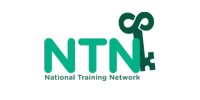Encourages students to apply mathematical reasoning and strategies to complex, real-world, and abstract problems.
ATLAS Indicators to Look For: SMP 1, 2, 4, 6
Cognitive Pathway Assessment:
Problem-Solving
- Do you currently have a problem-solving pathway in place?
- How effective do you find the current cognitive pathway in addressing student needs (as it relates to the desired behaviors of the SMPs)?
- What specific adjustments do you believe are necessary to align the current problem solving strategy with the expectations of “SOLVE”
Knowledge and Experience with SMPs
- How familiar is the teacher(s) with the Standards for Mathematical Practice (SMPs)?
- What experiences has the teacher(s) had in implementing these SMPs in their classroom?
- In what ways has the teacher(s) understanding of the SMPs influenced their current problem-solving strategy, if applicable?
- What challenges has the teacher faced in integrating the SMPs into their problem-solving approach and daily instruction?
- Are the problems being used standards aligned and culturally relevant, and if not how is that being addressed?
Number of Visits: At least 1 visit per month (about 9 visits)
Structure of Math Block:
Where was problem solving evident during the classroom visit? (i.e. teacher/student modeling with annotation, teacher using questioning to encourage discourse, etc.) Was there a missed opportunity?
Classroom Setup:
Is there a student reference for the cognitive pathway that they use (posters); Word walls up, student access to a reference point for mathematics language; seating arrangement feasible for students to get in groups and pairs easily
What could the data points be:
- ATLAS Data
- Student work Samples on open ended questions
- Summative assessments
- Formative assessments
- Teacher/coach created rubrics (from curricular resource)
- State Rubrics for problem solving (i.e. MD modeling and reasoning standards)
- NTN Created Peer Reflection Rubrics
Additional considerations:
- Number of Teachers?
- Visit Day Schedule?
- When do they teach math and when is common and individual planning?
NTN Partnership Rubric:

SMP 1 Indicators:
- Identify the question (Step S)
- Explain the meaning of what the problem is asking (Step S)
- Analyze information (Step O)
- Line up a plan (Step L)
- Use/understand multiple strategies/representations to solve (Step V)
- Evaluate and reevaluate progress throughout problem solving situations
- Check to see if the answer made sense (Step E)
- Check for accuracy (Step E)
- Check for reasonableness (Step E)
- Justify reasoning with others
Coaching Focus Areas
- Introducing a cognitive pathway/SOLVE Training
- MLR/Irs/HYS :
- Three Reads
- Capturing Quantities
- Stronger and clearer
- Discussion Supports
- 5 practices
- Distributive Summarizing
- Operation Word Wall Creation
- Estimation training/discussion
- “Just In Time” Content Training (CPA)
- Modifiying existing pathway to beef up to SOLVE
- Math Teaching Practices:
- MTP 2:Implement tasks that promote reasoning and problem solving.
- MTP 3: Use and connect mathematical representations.
- MTP 4: Facilitate meaningful mathematical discourse.
- MTP 5:Pose purposeful questions.
- MTP 7:Support productive struggle in learning mathematics.
- MTP 8:Elicit and use evidence of student thinking.
SMP 2 Indicators:
- Create a plan to solve a problem based on the meaning of the quantities
- Use context clues to solve using symbols (operation word wall)
- Determine reasonableness of solution within context of problem
- Justify math strategy used as most efficient method
Coaching Focus Areas
- MLR/IRs/HYS :
- Three Reads
- Capturing Quantities
- Operation Word Wall Creation
- Estimation training/discussion
- Math Teacher Practices:
- MTP 3: Use and connect mathematical representations.
- MTP 4: Facilitate meaningful mathematical discourse.
- MTP 5:Pose purposeful questions.
- MTP 7:Support productive struggle in learning mathematics.
- MTP 8:Elicit and use evidence of student thinking.
SMP 4 Indicators:
- Describe relationship of facts in a problem
- Represent real world situation mathematically
- Apply facts to find solution to a problem
- Reevaluate and redesign plan as needed when solving
Coaching Focus Areas
- MLR/IRs/HYS :
- Discussion Supports
- 5 practices
- Distributive Summarizing
- Operation Word Wall Creation and Concept Based Word Wall
- “Just In Time” Content Training (CPA)
- Creating access points for students/Scaffolding
- Math Teacher Practices:
- MTP 2:Implement tasks that promote reasoning and problem solving.
- MTP 3: Use and connect mathematical representations.
- MTP 4: Facilitate meaningful mathematical discourse.
- MTP 5:Pose purposeful questions.
- MTP 7:Support productive struggle in learning mathematics.
- MTP 8:Elicit and use evidence of student thinking.
SMP 6 Indicators:
- Communicate reasoning with others
- Use correct mathematical language
- Apply calculations correctly
- Appropriately apply correct symbol use and labeling
Coaching Focus Areas
- MLR/IRs/HYS :
- Stronger and clearer
- Discussion Supports
- 5 practices
- Distributive Summarizing
- Operation Word Wall Creation and concept based word wall
- Use of Graphic Organizers
- “Just In Time” Content Training (CPA)
- Math Teaching Practices:
- MTP 4: Facilitate meaningful mathematical discourse.
- MTP 5:Pose purposeful questions.
- MTP 7:Support productive struggle in learning mathematics.
- MTP 6:Build procedural fluency from conceptual understanding.
- MTP 8:Elicit and use evidence of student thinking.


